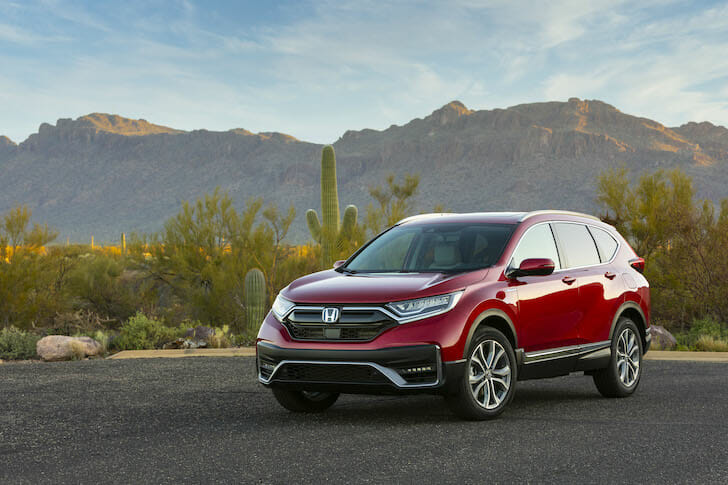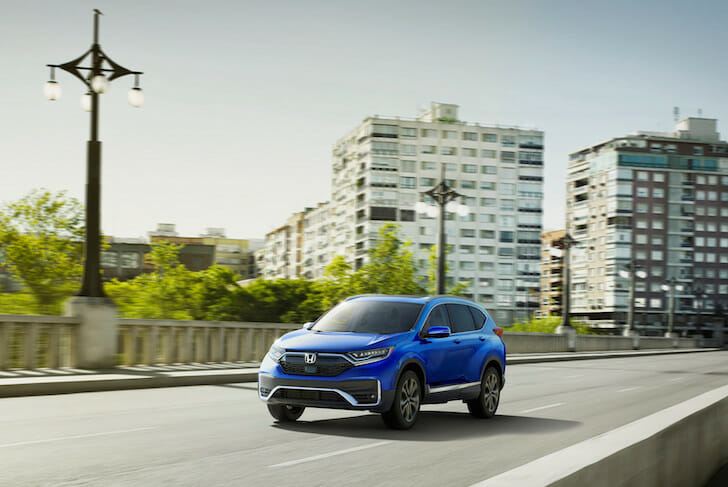The air filter in your Honda CR-V traps debris while sending enough airflow into the engine for the combustion cycle. Over time, the trapped dirt builds up in the element and greatly reduces airflow. Thankfully, all you have to do then is change the filter and you’re good to go.

What’s the best air filter for the 2020 Honda CR-V?
You can get a replacement original equipment manufacturer air filter for your 2020 Honda CR-V for about $15 from HondaPartsNow.com. If you want to go with a high-quality aftermarket option, Amazon has the right K&N filter for just over $50.
When should you change the air filter in your 2020 CR-V anyway? Is it easy to do yourself? Is it better to get an OEM filter or aftermarket? We have all the answers to these questions and more, so follow along to learn all you need to know.
When You Should Change Your 2020 CR-V Air Filter
To keep clean air flowing into your 2020 Honda CR-V’s engine, you should change its filter every 15,000 to 30,000 miles. If you live in an area with dust, pollen and other contaminants flowing through the air more often than not, change it every 10,000 miles instead.
Since local conditions determine how often you should change your engine air filter, it’s important to have it checked at each oil change. Your auto tech can peek in the airbox to see how the filter looks and let you know if it’s due for service. Even if it’s early, you should change filters that look dirty or damaged.
If you’re comfortable under the hood, you can even inspect and change your air filter yourself by following these steps:
- Remove all of the 8-millimeter bolts around the top of the airbox.
- Lift up the lid on the airbox while being careful to not disturb the wiring or intake tube.
- Pull the old filter out and replace it with the new one.
As you put in the replacement, make sure to align the locating tab on the filter with the one on the airbox. Then, reinstall the bolts to complete this service. You can then take your car for a drive around the block to verify that all is well.
Aftermarket vs. OEM: Which is Better For Your CR-V?
Although it’s only $15, the OEM Honda air filter is a quality part designed to perfectly fit in your 2020 CR-V’s airbox. It’s also perfectly designed to provide optimal airflow to the engine to keep it running at peak efficiency.
If you want improved airflow, you can go with a K&N aftermarket air filter instead. Since they are reusable, they can also help keep more money in your pocket over the years.
You will have to shell out $50 upfront for the K&N filter, but after that, you’re good for 10 years or 1 million miles. These reusable filters are much more time-consuming to service than OEM filters, which you just pull out and chuck in the trash.

At each service interval, you have to thoroughly clean and dry your reusable air filter. Then, apply oil to its pleats and let it sit until all the oil is absorbed before reinstalling it in your car. All this can take a lot of time and can potentially result in a higher service bill if you take it to the shop instead of doing it at home.
Overall, it all comes down to your preferences in selecting between aftermarket and OEM air filters for your CR-V. Your budget, service preferences and engine performance goals will all come into play as you make this important decision.
Want to Learn Even More about the 2020 CR-V?
If you’re curious about your 2020 Honda CR-V’s specs or want to learn about other owners’ experiences with this sweet little car, let Vehicle History help you out. At each visit, you can explore all the different trim levels, read expert reviews, or check out the history of your car.
Photos: Honda